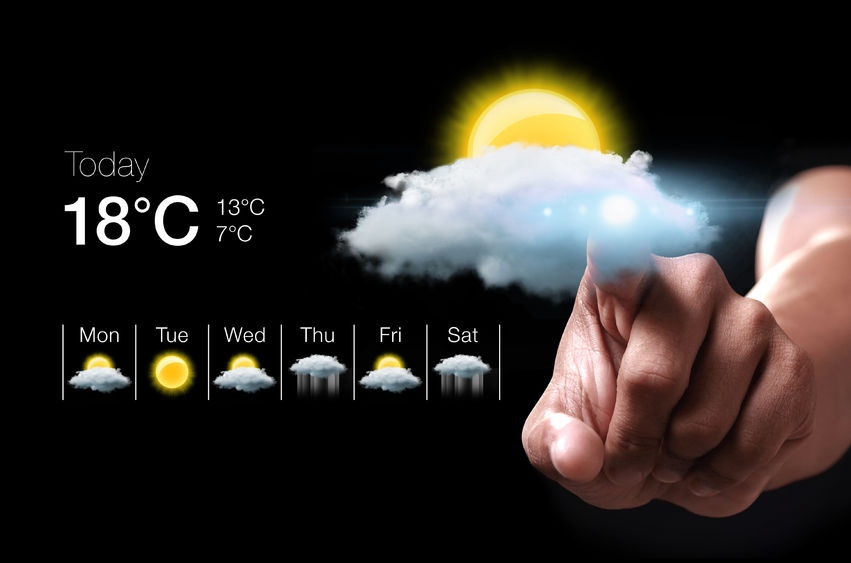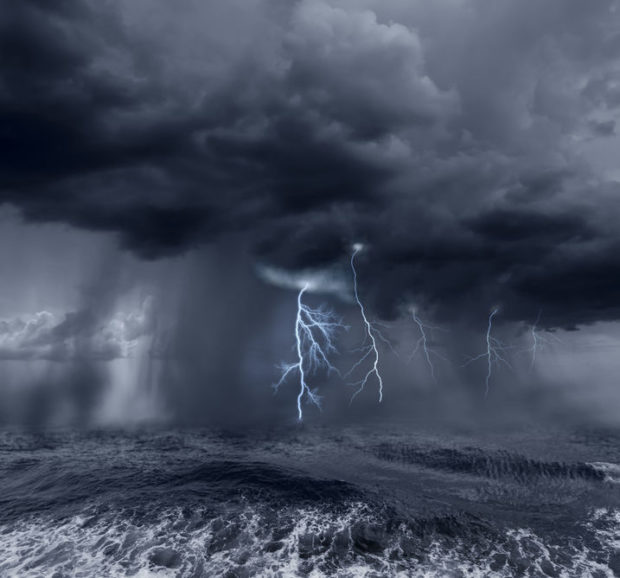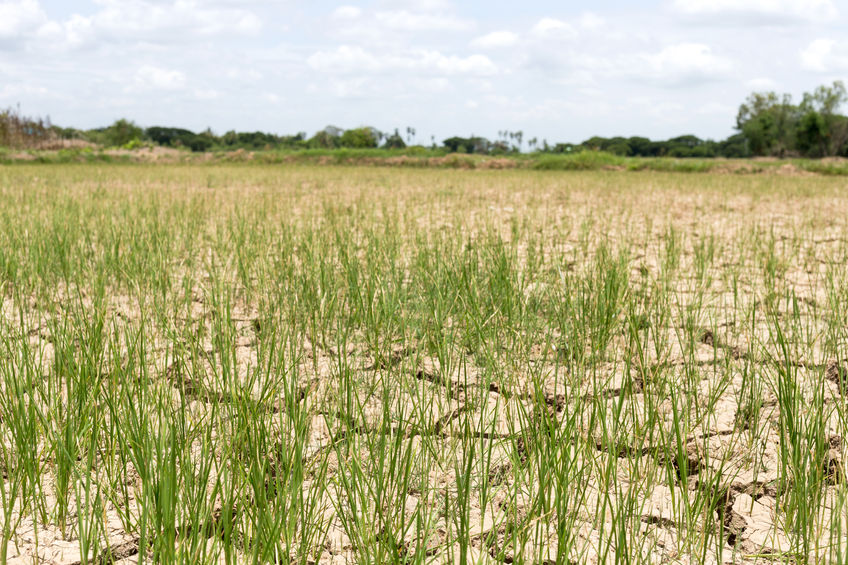Weather 101: A quick guide to Philippine weather conditions

Image: INQUIRER.net stock photo
With storms annually sweeping different parts of the country, Filipinos usually check weather reports only to know if there’s an incoming typhoon.
But this negative mindset is what the Weather Philippines Foundation (WPF) wants to change.
While the weather affects food production, water supply, and in the case of the country’s major cities, traffic conditions, we can work with the weather when we know its cycles.
Being aware of these cycles can help you beat the odds, advises John Michael Lequiron, a meteorologist at WPF.
Make sense of those daily weather reports with answers to the following questions:
Article continues after this advertisementWhy are weather forecasts sometimes wrong?
Article continues after this advertisement
Image: INQUIRER.net stock photo
Forecasts are an approximation considering a multitude of factors. It takes a supercomputer to corroborate all of these with mathematical models.
With all these factors, Lequiron describes weather forecasting as “95 per cent of it is science, and five per cent is art or gut feel.”
What is most difficult to predict is a thunderstorm. Because the weather suddenly changes, models can only estimate it within an hour or minutes before it happens. However, based on historical patterns, they usually occur in the late afternoon between 5 p.m. to 7 p.m.
So if you see clear skies after weather bureau PAGASA warns of a thunderstorm, know that predicting the weather still takes guesswork, even with the latest technology.
Why is there no such thing as summer in the Philippines?
The Philippines has two types of seasons: wet and dry. Because of this, “there is no such thing as summer,” says Lequiron.
The dry season is from December to May. From December to February, we have the cool dry season, and from March to May, it is hot dry. The time of March to May that we associate with summer is the transition between the northeast monsoon (amihan) and the southwest monsoon (habagat).
The rainy season is from June to November. However, the rains throughout the year are due to weather disturbances like monsoons and cyclones.
What are monsoons?
The monsoon is a seasonal rain and wind pattern best known as habagat and amihan to Filipinos. The temperature differences in the land and ocean cause shifts in the winds.
Habagat is the southwest monsoon. Wind comes from high-pressure areas in Australia that goes to low-pressure areas in China and Siberia. The southwest winds are warm and moist, which is why from June to October, heavy rainfall hits the west side of the country.
Amihan is the northeast monsoon that occurs from November to April. During this period, winds go in the opposite direction: from China, the wind goes to the low-pressure parts of Australia. From November to April, the cool and dry winds bring slight to moderate rains on the eastern side of the country.
Unlike cyclones, monsoons do not have circular winds; they move in a straight line.
What’s the difference between cyclones, hurricanes and storms?

Image: INQUIRER.net stock photo
They’re all one and the same.
When we say “bagyo”, what we refer to is the cyclone. This is the general term for the weather disturbance we’re most familiar with: heavy winds that rotate and bring torrential rains. The name only changes depending where one lives.
In tropical regions like the southern Pacific Ocean, these disturbances are called cyclones.
The cyclone is known as a hurricane when it starts at the Atlantic Ocean. Hence, “Hurricane Katrina” in the United States and “Typhoon Yolanda” in the Philippines.
Cyclones are classified as follows:
- Tropical depression – maximum sustained winds of 45 to 61 kilometers per hour
- Tropical storm – maximum sustained winds of 62 to 117 kilometers per hour
- Typhoon – maximum sustained winds of 118 to 220 kilometers per hour
- Super typhoon – maximum sustained winds over 220 kilometers per hour
Why does the Philippines always have cyclones?
The basic ingredients of a cyclone are warm ocean surfaces, moist air and light winds. In an ocean’s low-pressure areas, the warm air rises to cold air in the atmosphere. The air condenses to form clouds and soon, rain. The condensation also releases energy that produces strong winds.
Cyclones slow down or stop when they hit land. With the Philippines, as the only landform west of the Pacific Ocean, no wonder we are cyclones’ favorite targets, and that they hit us the strongest.
Why are some parts in the country more affected by tropical cyclones?
Even if the Pacific Ocean neighbors the country, not all areas are affected, as it depends on where the cyclone is formed, the direction it moves to, and the terrain of the region.
WPF relates that an average of 20 tropical cyclones enter the Philippine Area of Responsibility every year. Of those, up to 10 make landfall or affect the country.
Tropical cyclones hit Luzon the most, while Central and Southern Mindanao are least likely to experience them.
Based on a study from 1948 to 2010, the following regions are the most cyclone-prone areas in the country:
- Northern Luzon – 32 percent
- Batanes Group – 25 percent
- Southern Bicol, Mindoro, Masbate, Northern Panay, Samar, Northern Leyte – 19 percent
- Northern Bicol, Southern Tagalog Provinces, NCR – 16 percent
Regions outside of these places either have less frequent or rare occurrences of cyclones.
What are El Niño and La Niña?

Image: INQUIRER.net stock photo
The El Niño southern oscillation (ENSO) consists of El Niño, La Niña and La Nada, and has to do with the movement of trade winds.
In the Philippines, El Niño is associated with low rainfall or drought. La Niña indicates above average rainfall, while La Nada, though seldom mentioned, means normal rainfall.
As trade winds move west over the Pacific Ocean, warm surface water is pushed towards the western Pacific towards Asia. This breeds the conditions for major rainfall in the Philippines known as La Niña.
When trade winds weaken, the warm surface goes east or away from the Philippines, decreasing the likelihood of rainfall. This is what is known as a dry spell or El Niño.
The country’s weather bureau PAGASA can predict the probability of these conditions up to eight months before they happen. This gives those that may be affected, such as the agriculture sector, time to prepare for either condition.
How can I get close to accurate weather updates anywhere in the Philippines?

Image: Screen grab via Weather Philippines
Because of the various weather conditions not only within the country but within provinces and cities, WPF has its own tools to provide forecasting in majority of localities. This is a great advantage over other weather stations that only forecast for certain parts of the country.
WPF is an effort of Aboitiz and Union Bank which, in partnering with corporate competitors, aims to make every Filipino “#WeatherWiser” for better disaster risk reduction and improved socio-economic development.
For instance, the foundation has partnered with local government units to help determine class suspensions and increase the success of cloud seeding for farmers.
In the private sector, WPF’s tools have helped a local airline reduce diverted flights with more accurate weather updates. The foundation’s weather data can also benefit the academe or non-profits who need information on local weather over time.
As Valeriano says, knowing the weather needs to be more than saving lives. It should be about saving livelihoods.
In our next report, find out how private companies are working together for a more resilient Philippines—and even setting an example for other countries in the process.
For weather updates, visit weatherph.org. You can also download the app Weather Philippines, available for iOS and Android. JB
RELATED STORIES:
How to prepare for the Big One and other hazards in 8 steps
Breaking 6 myths on disaster preparedness, and making every Filipino even more resilient